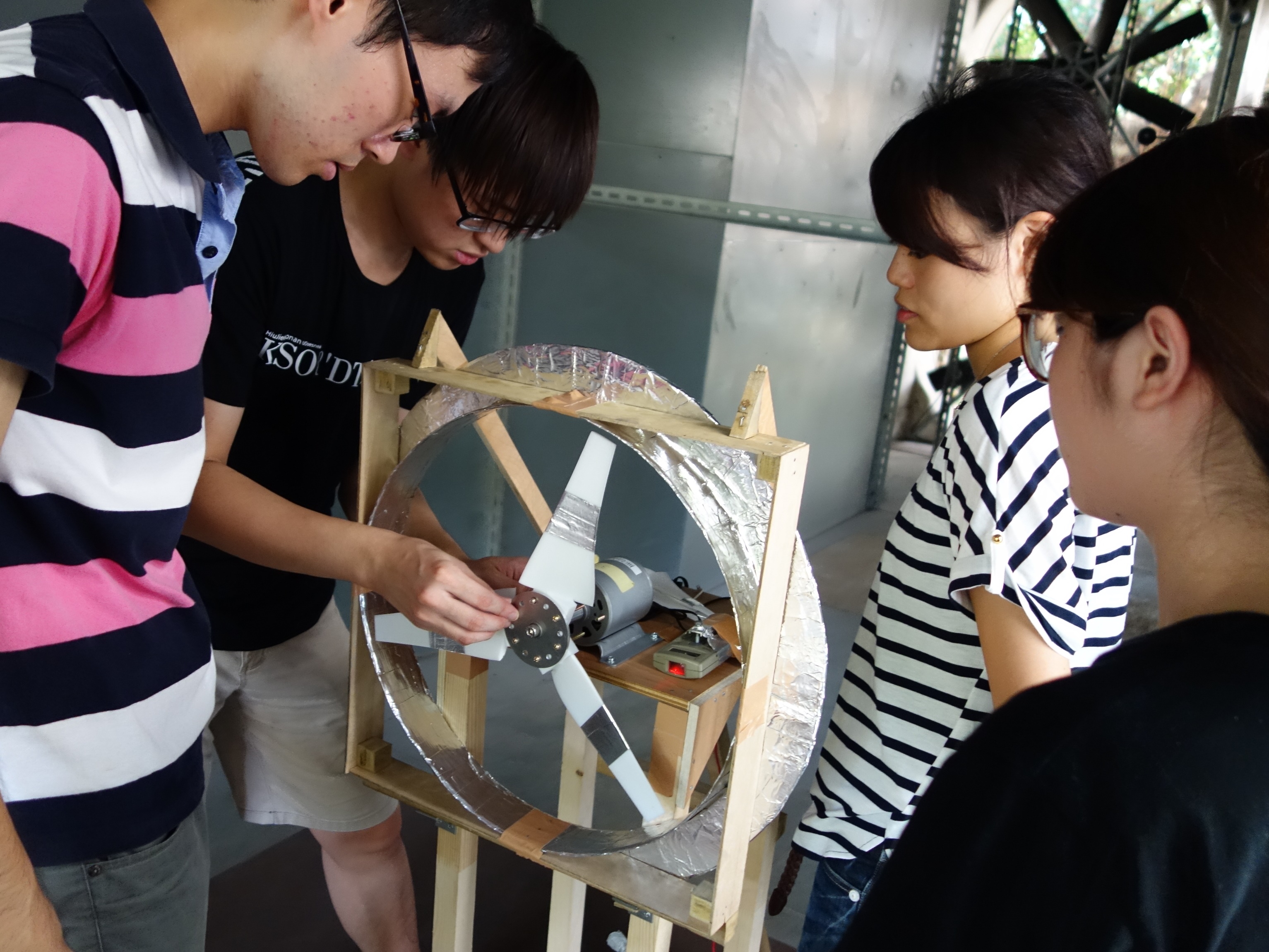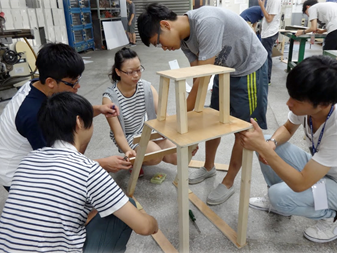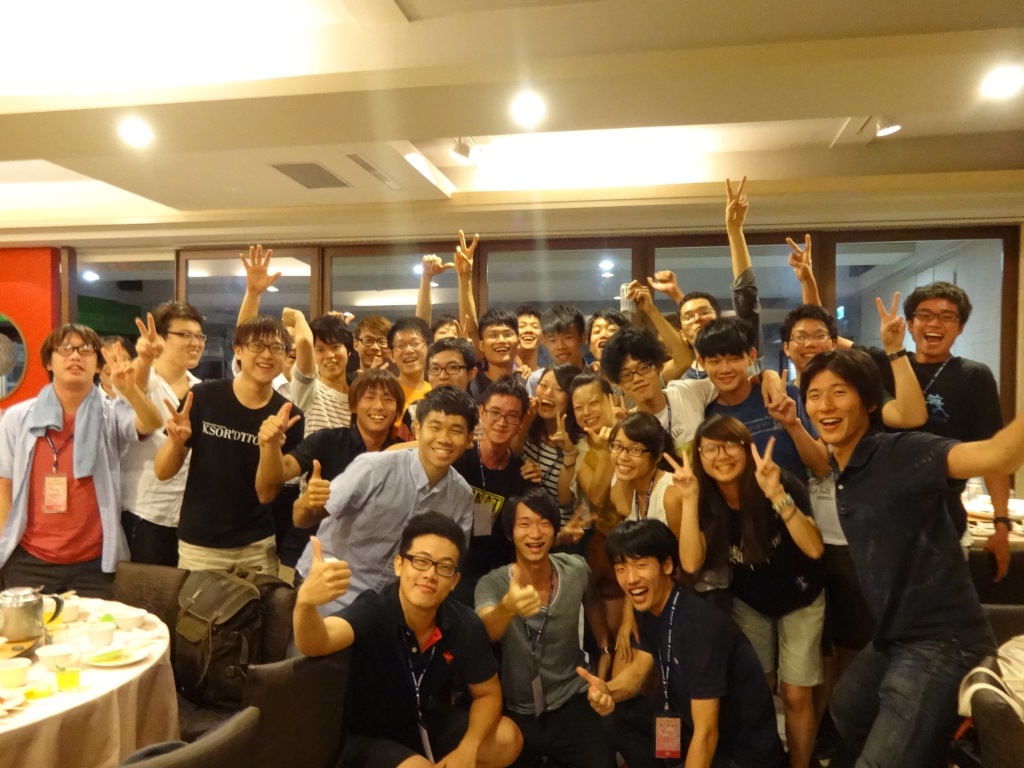トピックスTOPICS
機械工学科の学生が国立台湾科技大で国際PBLを実施しました OIT students participated in the iPBL program at NTUST
2014.09.17
8月19日~25日、工学部機械工学科は、本学と学術交流協定を締結している国立台湾科技大学(台湾)において、同大学の学生と国際PBL(Project-Based Learning)を実施し、本学の学生15人、台湾科技大の学生17人、TAや教員11人の計43人が参加しました。
「Wind Turbine」をテーマに、本学と同大学の学生6~7人で構成される、計5チームそれぞれが風レンズ(風力を効率よく獲得するためのパーツ)を用いた風車を製作し、最終日の性能テストでは発電量をチーム同士で競い合いました。
初日は、川田教授(工学部機械工学科)とTAの堀川裕之君(工学研究科機械工学専攻博士前期課程2年次生)によって風車に関するレクチャーが行われ、各チームで風車のコンセプトを検討。2日目からは、風車翼や風レンズ、土台の設計・製作に取り組みました。3Dプリンターを用いて製作した風車翼は、風車性能を上げるために表面に紙ヤスリをかけたり、接着剤で接合した部分にアルミテープを巻いて補強するなど、様々な工夫を凝らしました。風車の土台と風レンズは、角材やベニヤ板、プラスチックダンボールなど限られた材料で強度を追求したものを作製。各チーム様々なデザインで、チームの個性が光りました。
最終日に行われた最終評価会では、性能評価の結果や、風車翼および風レンズのデザインといった風車に関する評価の他に、日々のプレゼンテーションやチームワークなどを含めた総合的な評価が行われました。性能評価では全てのチームが見事風車を回すことができ、学生たちは達成感でいっぱいの表情を浮かべていました。その後行われた最終プレゼンテーションでは、風車のオリジナリティ、苦労した点など、メモを見ずに自らの言葉で話し、この数日間だけでも自分の考えを英語で話すスキルが身に付きつつある様子が伺えました。
各チームの順位が発表されると、優勝チームのメンバーは飛び上がって喜び、学生たちは拍手でその成果を称え、大きな盛り上がりを見せました。本学学生からは、「台湾科技大の学生の積極的な姿勢を見習いたいです。物怖じせずに発言することの大切さを学びました」といった声が聞かれ、今後の学生生活に好影響を与える素晴らしい機会となったようでした。
本学の国際PBLについてはこちらをご覧ください。
<国際PBLとは>
PBLは、与えられた課題を制限された条件下で取り組むことで、課題解決力や創造性など、学生の多様な能力を引き出すことを目的とする学習方法です。海外大学との国際PBLは、分野や文化が異なる学生同士が協力して課題を解決することで、語学力やコミュニケーション力の向上を図り、将来エンジニアとして国際的な協働を行う素地を養います。
From August 19 to 25, 2014, OIT students from the Department of Mechanical Engineering visited National Taiwan University of Science and Technology (NTUST) and participated in the International Project-Based Learning (iPBL) program with students from NTUST’s Department of Mechanical Engineering. It is one of five iPBL programs that OIT initiated this year.
5 teams (6-7 persons per team), consisting of NTUST and OIT students, tackled a task of designing and building a wind turbine with a wind lens (see pictures above) using the given materials and within a period of 4 days, communicating in English and cooperating closely.
On the last day of the program, a competition was held by using the wind tunnel of NTUST and the groups were judged according to the power output of their wind turbines. The groups were awarded points for the design of their turbine blades and wind lens, their presentation of the finished design, and the communication and cooperation within the team.
All the teams succeeded in generating power from their wind turbines. When the ranking was announced, the members of the winning team jumped with joy, while the others praised them with applause.
Our students admired the NTUST students’ positive and outgoing attitude. This event was surely an opportunity to give our students a taste of professional development in the industry within the global environment, and boost their motivation to pursue study and to improve their English ability.







